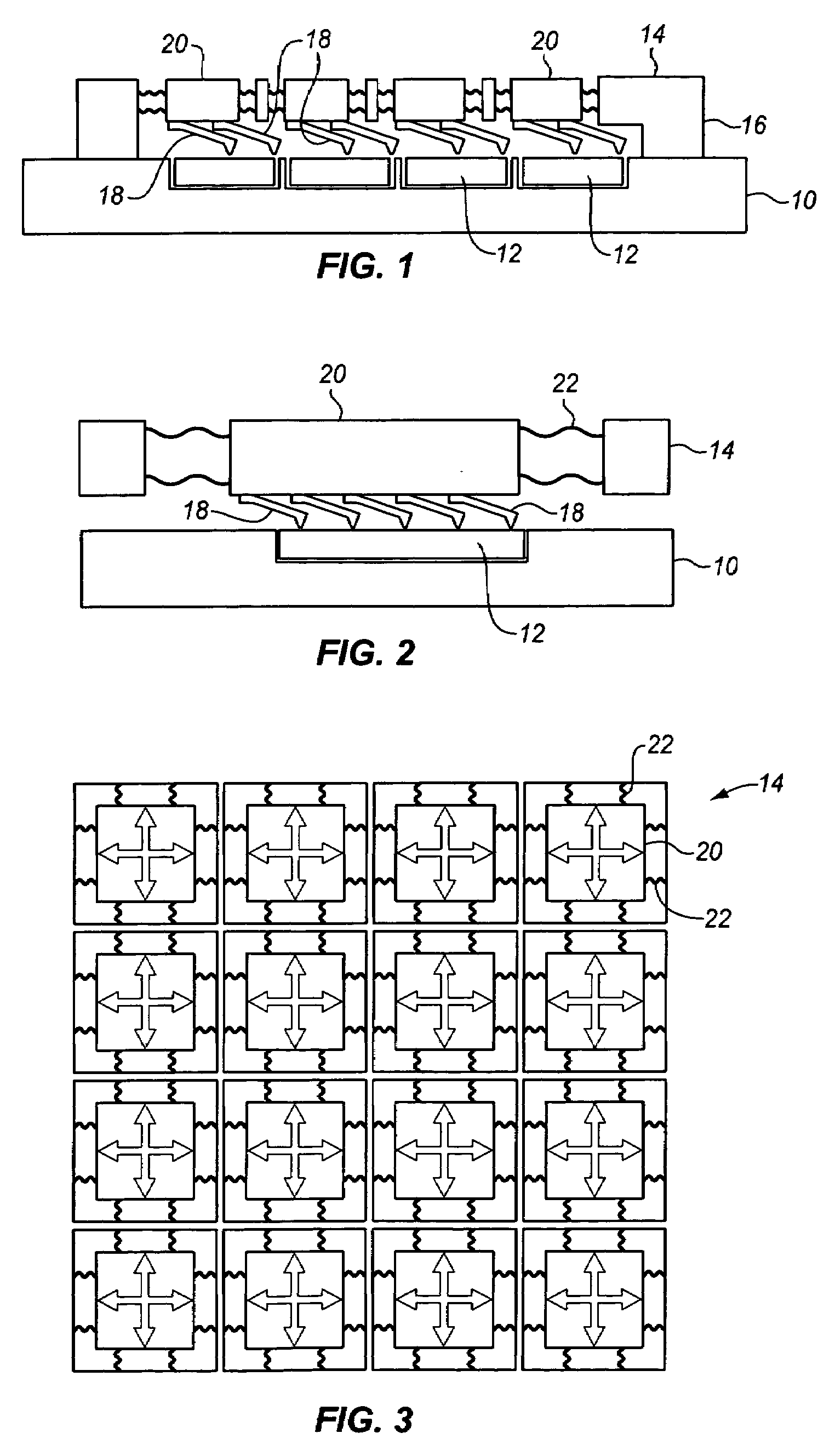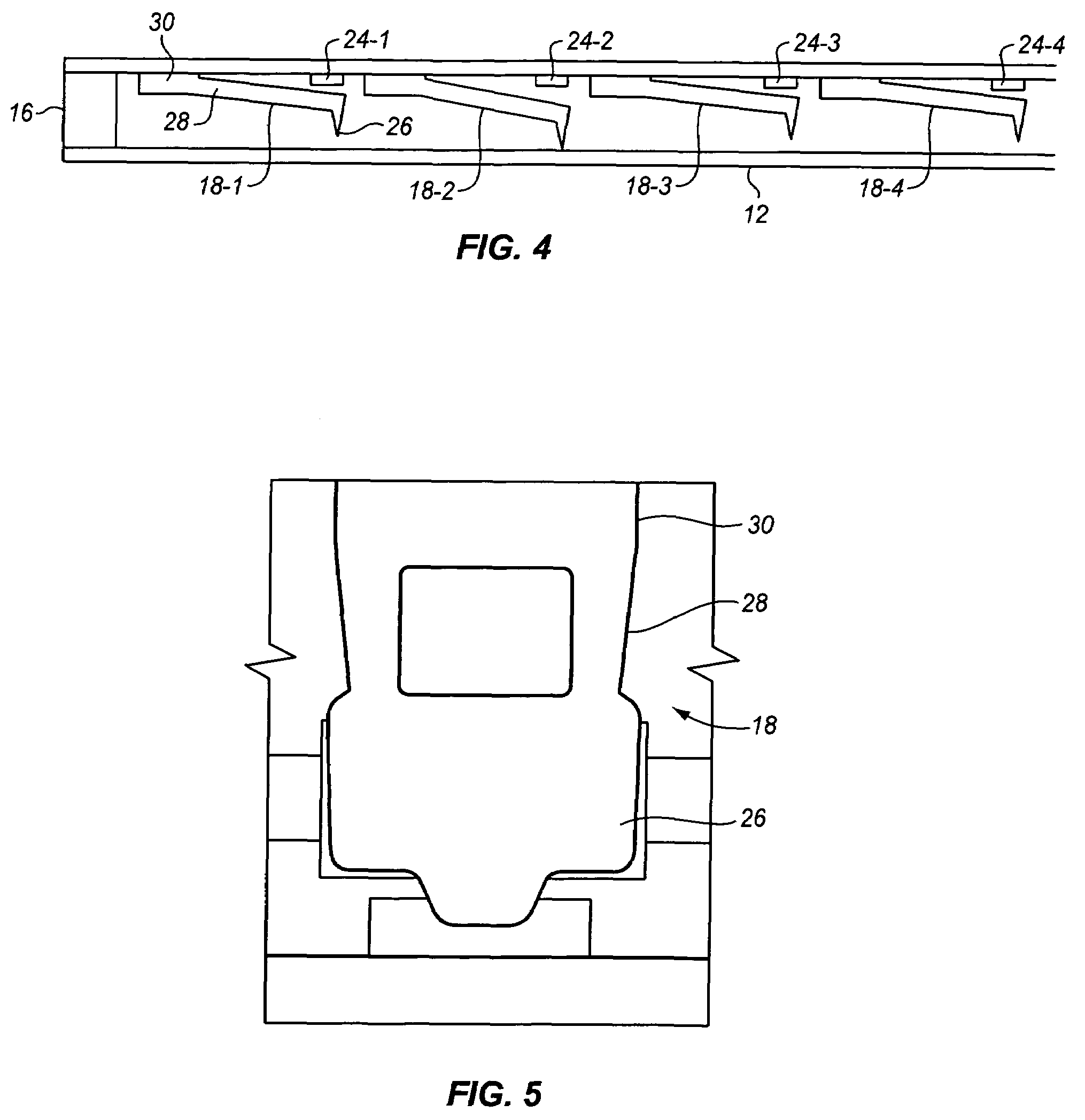Probe based patterning of microelectronic and micromechanical devices
- Summary
- Abstract
- Description
- Claims
- Application Information
AI Technical Summary
Problems solved by technology
Method used
Image
Examples
Embodiment Construction
[0020]New ways to pattern substrates are described. These can be used instead of or in combination with current techniques that use electromagnetic radiation (light, X-Rays etc) or charged particle beams (E-Beam, Ion Beam etc). As described below, a sharp mechanical probe tip may be used to indent or emboss patterns directly into photoresist or any other suitable material. The probe is attached to a high precision X-Y positioning stage. Current stages can position a probe to within fractions of a nanometer. This may allow for significantly smaller features to be produced than even EUV will be able to achieve.
[0021]By forming an array of probes on an X-Y positioning stage, with each probe scanning a small area, large substrate areas may be patterned in a short amount of time. This is accomplished by taking advantage of the parallelism afforded by the many probes. Even though the scan travel of a single probe tip may be small (for example about 50 micrometers), a large area can be cov...
PUM
 Login to View More
Login to View More Abstract
Description
Claims
Application Information
 Login to View More
Login to View More - R&D Engineer
- R&D Manager
- IP Professional
- Industry Leading Data Capabilities
- Powerful AI technology
- Patent DNA Extraction
Browse by: Latest US Patents, China's latest patents, Technical Efficacy Thesaurus, Application Domain, Technology Topic, Popular Technical Reports.
© 2024 PatSnap. All rights reserved.Legal|Privacy policy|Modern Slavery Act Transparency Statement|Sitemap|About US| Contact US: help@patsnap.com










